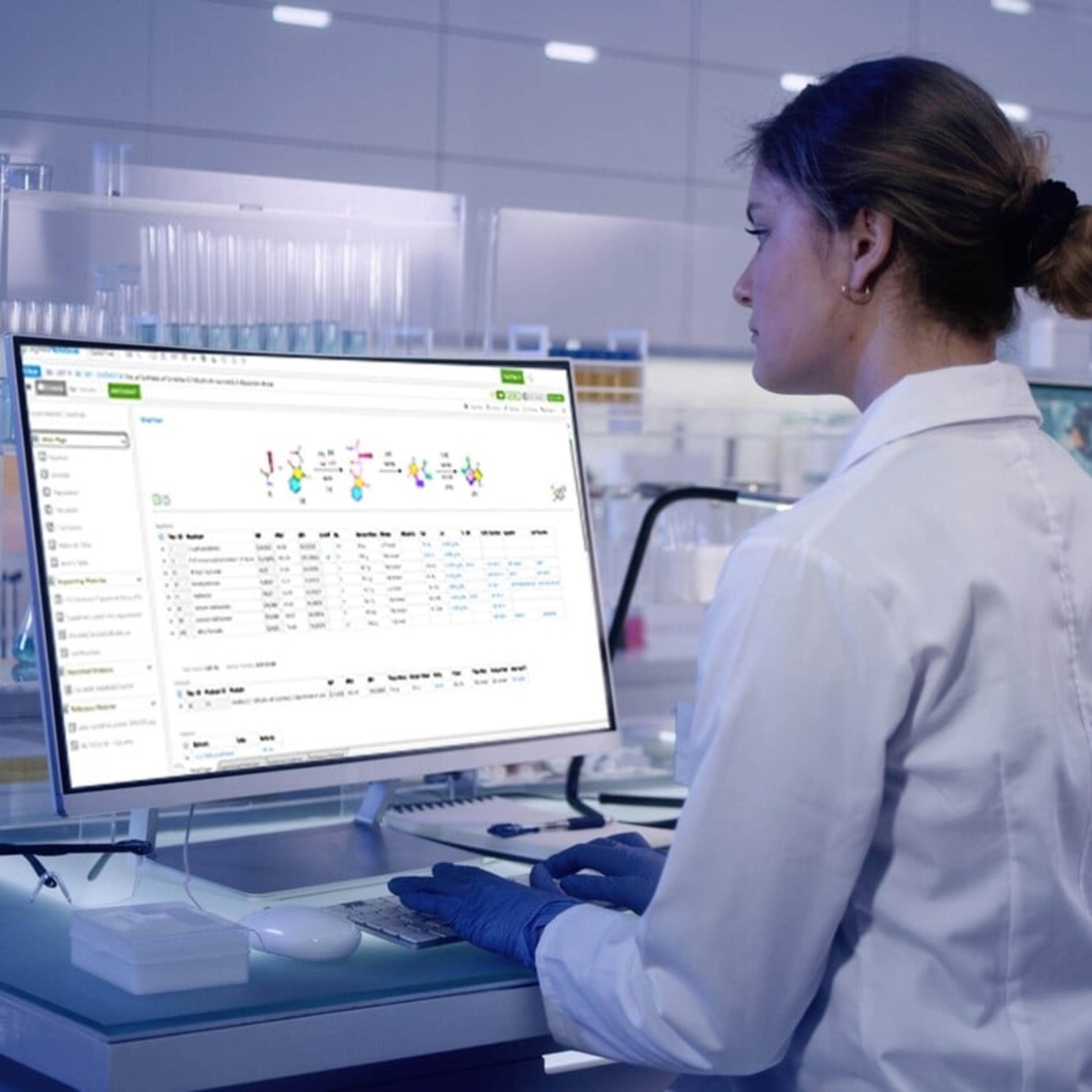Materials innovation: How can informatics solutions improve efficiency in the specialty chemicals industry
Watch this on-demand webinar to learn how informatics solutions can facilitate better collaboration to accelerate the innovation process
12 Jun 2022

Specialty chemical and related industries are faced with many challenges in the development of new products and the optimization of existing materials. The innovation process can be very time-consuming and has high demands on cost and materials performance/properties.
In this SelectScience webinar, now available on demand, Dr. David Gosalvez, executive director of science and technology, PerkinElmer Informatics, and Dr. Ben Bracke, principle field application scientist, PerkinElmer Informatics, discuss how informatics solutions like an electronic lab notebook (ELN) and data analytics can help a specialty chemicals company excel in delivering on external requests by optimizing, accelerating, and facilitating collaboration.
Watch on demandThink you’d benefit, but missed the live event? Register now to watch the webinar at a time that suits you or read on for highlights from the Q&A session.
What type of data can Data Factory process?
DG: Delimited text data, Microsoft® Excel®, as well as external connections to any SQL database where you can retrieve the data from the database. Those are the most common ways in which data gets introduced and indexed by the Signals™ Inventa.
The system also has a programmable API. If you are interacting with other data systems that expose the data programmatically, it's possible to orchestrate by writing the scripts or programs, the interaction between the system so that data from those external systems are automatically fed and kept up to date within the Signals Inventa index that drives all the visual dashboards.
What type of data visualizations other than radar plots and histograms are available?
BB: We're very fortunate to have this fantastic collaboration with TIBCO Spotfire® and they're pushing the boundaries in that area. The type of visualizations you have include: cross tables, waterfall charts, line charts, 3D scatter plots, 3D maps, and heat maps. You can even superimpose certain plots on top of geographical charts, and there are many other capabilities.
In the recent releases of TIBCO Spotfire, they also brought in the capability of introducing mods, which are visualizations that could be created by the user community. If you go to TIBCO's website, you'll find some of these capabilities. You can combine and put as many plots on as many kinds of dashboards as you want as long as you can keep the overview and the visualization. But I think the whole capability, the flexibility, and the speed with which you can deploy that is kind of quite amazing within the TIBCO Spotfire suite.
DG: The Spotfire platform is the premier business intelligence analytics platform. It has many other visualizations and capabilities that you can get out of the box with the platform, not just visualizations but also data processing and analytic capabilities. It goes well beyond just visuals but also can integrate analysis, computations, statistics, AI, machine learning, and so forth.
It is also the premier scientific data analysis platform because PerkinElmer, over the last decade, has invested heavily in extending the platform. So, beyond the standard visualizations that may be useful for any other industry, we have created very specific tools for chemical and scientific data. You will find many of the sophisticated user interfaces, plots, and visualizations are catering to the needs of a scientist in a lab.
Scientific R&D systems store some very critical intellectual property data. How can PerkinElmer ensure that the cloud system is secure?
DG: You have to trust your vendor, their practices, and their certifications. In the case of cloud software, when you have a vendor that has the right processes and certifications, like PerkinElmer, which has System and Organization Controls (SOC) 2 and SOC 3 attestations and ISO certifications, we follow and can be audited on the best practices for security, monitoring, and penetration testing. Because we do this type of setup on the cloud for hundreds of customers, we can dedicate staff and processes that no single organization could. I would say currently, cloud systems run by reputable experts, will be much more secure than anything an internal IT department could run. Just because it is internal, it isn't isolated from the world, and it is therefore exposed to the same security risks. The security practices that we can demonstrate are superior to those that most internal IT departments can develop on their own.
To learn more about how informatics can help you accelerate your innovation, watch the full webinar here>>
SelectScience runs 10+ webinars a month across various scientific topics, discover more of our upcoming webinars>>

